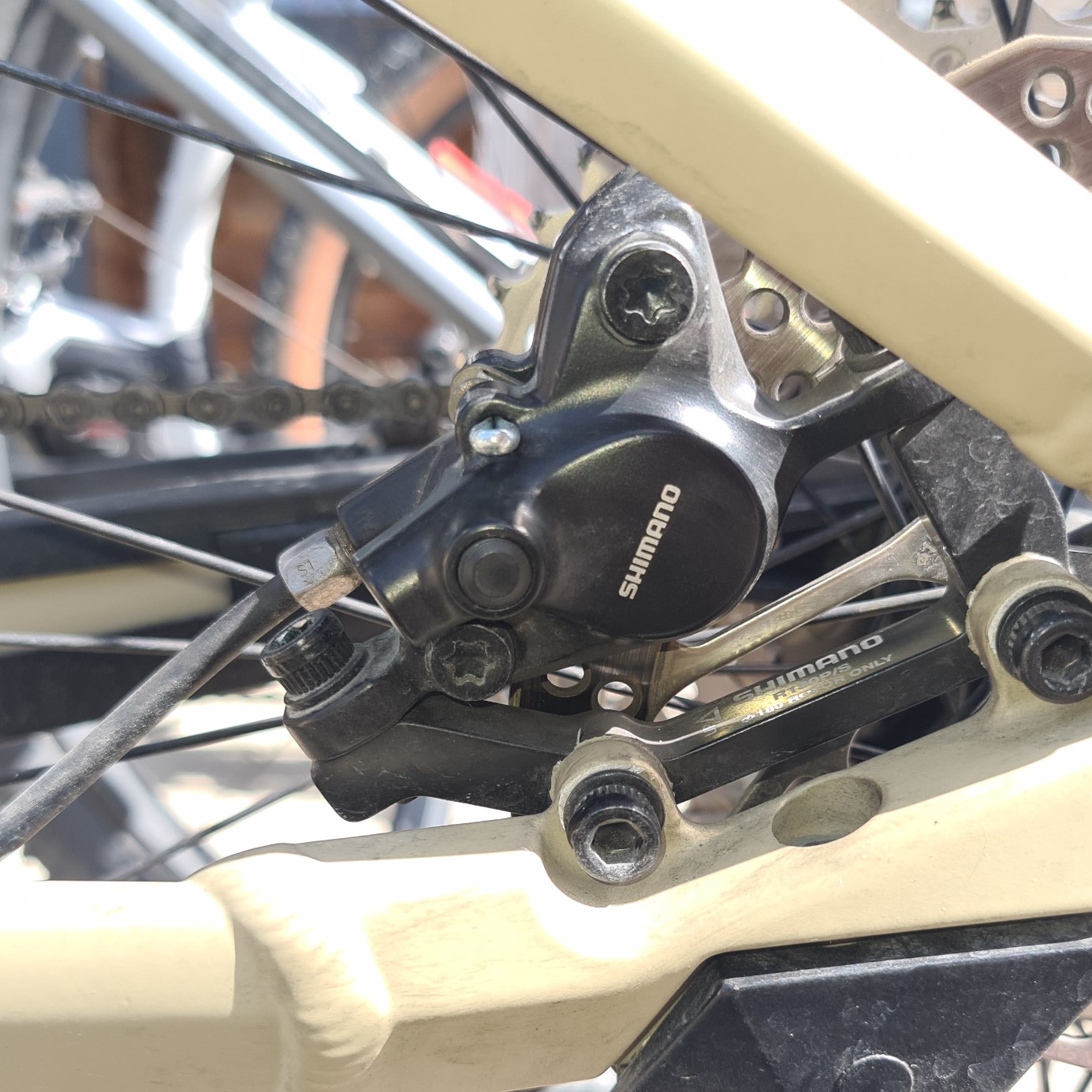- Posted on
- By reinsoesbergen
- In How to

How to: replace my brake pads
Do you brake very slowly or does it take too much force when you squeeze to brake? In this blog you’ll find out what causes it and how to solve it.
The parts that are important when replacing are:
- Break pads
- Breaks
- Pins or screws
The tools you need for this job are pliers, torxs in some cases and a flat tool. The best works a tool that is specially designed for this job.
When should I start to replace my brake pads?
Brake pads should be replaced when they are worn, when they are very dirty or simply when you notice that they are no longer braking properly.
Worn out
These pads should be at least 1 millimetre thick. The easiest way to measure this is to stack 3 business cards on top of each other and hold them against each other. Here are two photos shown so you can see the difference between new and worn brake pads.
Dirty
When you notice that your brakes no longer work properly, and they are still more than 1 millimeter thic, than the cause might be that your pads are dirty. This can come from oil or lubricant in a spray can. To check this, run your finger over the brake disc, if there is a lot of dirt left on your finger, this could be the reason.


Removal
The easiest way to remove your brake pads is to hang your bike up in a repair stand. First, remove the wheel. Most brakes have two different systems to hold brake pads in place. Either with a pin or a screw. With the pin, you bend the end straight and pull the pin out. With the screw, you simply unscrew it.
Now that the pin or screw is loose, take the pliers and gently pull out the brake pads one by one. Some brakes have a spring attached to them, in which you also remove it.
Replacing
Before you can install the new brake pads, you have to push back the brakes itself. Because the old brake pads are a few millimetres smaller, your new brake pads are often too thic to fit in. Now that you have pushed back the brakes, take the pliers and carefully put the new brake pads back in place. When they are in place, take your pin or screw and put them back on. Do not forget to bend the end of the pin again to hold them in place.
Finally, it is important to get the brakes back in the right place. You do this by squeezing your brakes about twenty times. The reason that you do this, is because often you pushed the brakes back too far when replacing your new brake pads. And voilà, your mountainbike is ready for the next tour or trail!




